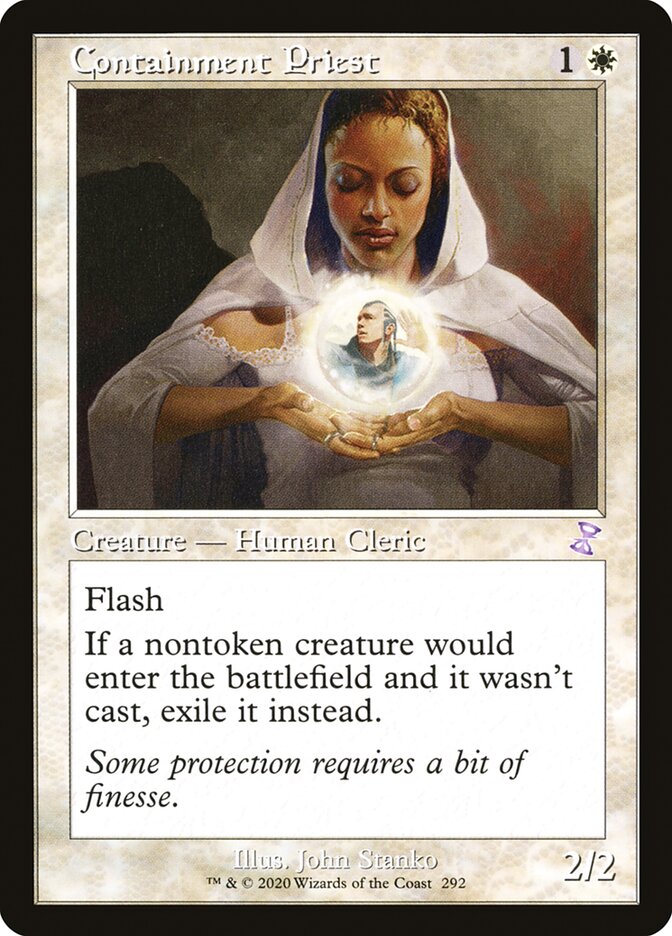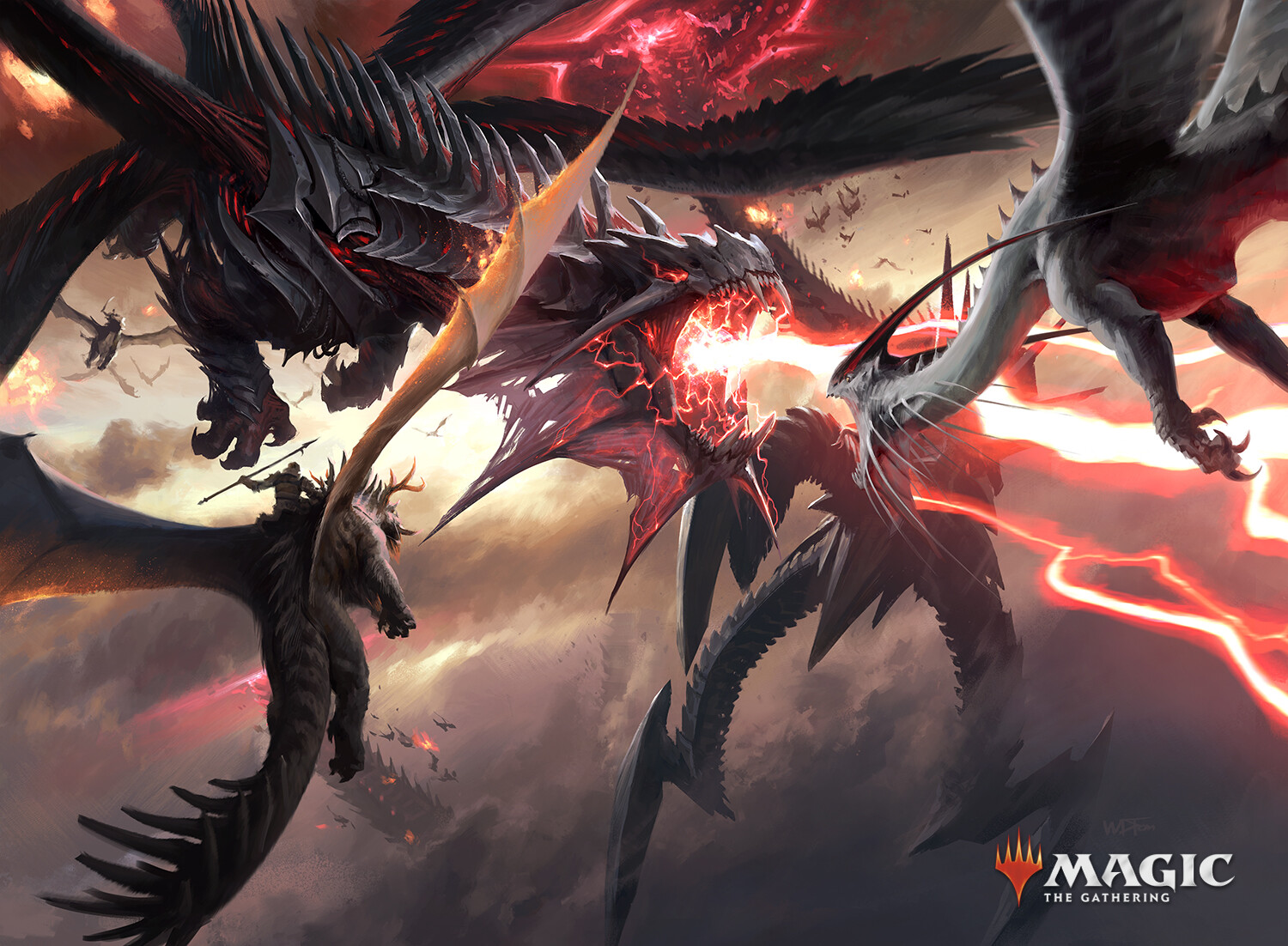Hello everyone, I’m Riccardo Piraccini. In this article, I’ll dive into the list featuring Phelia, Exuberant Shepherd, which surprisingly led me to a Top 8 finish at the Classicum in Rome, marking the end of the 2nd Centurion Tournament Season.
Why Phelia?
The idea came about while I was browsing Legacy lists for inspiration. I noticed the latest versions of Death and Taxes, where Phelia, Exuberant Shepherd is sometimes included as a four-of to bolster the numerous ETB effects. Since I have a peculiar passion for creating new and sometimes questionable decks, and I had never explored “blink” strategies, plus the dream of playing a hatebears deck in Centurion, I decided to give this little pup a shot.

Deck structure
Starting with the commander: Phelia, Exuberant Shepherd is a 2/2 legendary dog for two mana, with Flash and the ability to exile a nonland permanent when it attacks, returning it at the beginning of the end step; if that permanent returns to the battlefield under our control, Phelia, Exuberant Shepherd also gets a +1/+1 counter.
This creates a constant “blinking” engine, allowing us to generate various forms of advantage by leveraging the different ETB effects of our permanents, as long as we can keep our commander on the battlefield and attacking safely. Additionally, it’s worth noting that Phelia, Exuberant Shepherd can temporarily exile an opponent’s nonland permanent if needed, removing potential blockers to swing the combat phase in our favor or dealing with other troublesome cards. As we’ll see later, this option can be particularly significant thanks to a specific tech in the deck.
The deck primarily functions as an aggro/midrange with some tempo elements. Early in the game, the goal is to develop a solid board while efficiently interacting with opponent threats, creating a resource and board presence gap that’s hard to close in the medium to long term and finishing the game with a few attacks.
Excluding the necessary white inclusions, here’s a breakdown of the deck’s functions. If a card serves multiple roles, I’ve placed it in what I consider the most relevant category.
Card advantage



Wall of Omens, Spirited Companion, Stoneforge Mystic, Moon-Blessed Cleric, Ranger Captain of Eos, Recruiter of the Guard, White Plume Adventurer, Seasoned Dungeoneer, Combat Thresher, Arcum’s Astrolabe, The One Ring.
A key point here is the ability to tutor for Cliffhaven Kitesail with Stoneforge Mystic and equip it to Phelia, Exuberant Shepherd to grant her evasion. This setup allows for safe attacks as early as turn 3. The target of Phelia, Exuberant Shepherd’s blink can be Mystic itself, which upon returning lets us tutor for new equipment.
Additionally, Recruiter of the Guard can tutor for Solitude, and a second entry of Recruiter, achievable as early as turn 3, can provide the pitch needed for the Elemental during the end step.
Board advantage
Tokens
Blade splicer, Glimmer Lens, Staff of the Storyteller, Legion’s Landing
Not much to say here, except that Glimmer Lens and Staff of the Storyteller are essential pillars of the deck, valuable against both aggro/midrange and control decks due to their dual role as token generators and draw engines.
Blade Splicer needs no introduction. One blink with Phelia, Exuberant Shepherd gives us a +7 power boost on the board by turn 3, not to mention the potential to create a 3/3 Golem every turn.
Legion’s Landing may be less impactful compared to the other cards, but its low cost and the ability to create Lifelink tokens can be quite useful in various matchups, from aggro to control.
Recursion
Samwise the Stouthearted, Pre-war Formalwear, Together Forever
Together Forever not only boosts combat pressure but also helps recover creatures that die, as long as they have counters (not necessarily +1/+1). Starting with Benevolent Bodyguard or Selfless Savior, Phelia, and Together Forever effectively provide near-permanent protection for our commander or other key creatures.
Samwise is crucial not only for recursion but also for the ring mechanic, which synergizes well with the aggro plan and our commander. By blinking Samwise, we can quickly reach the 4 effects of the ring’s temptation, making Phelia or another creature a nightmare for opponents on defense.
Removal
White-Orchid Phantom, Skycleave Apparition, Werefox Bodyguard, Witch Enchanter, Palace Jailer, Solitude, The Princess Takes Flight, Parallax Wave.
Skycleave Apparition might seem less synergistic with the blink plan due to the token it gives the opponent when it leaves the battlefield, but it’s too versatile to exclude. Furthermore, Phelia, Exuberant Shepherd can easily handle opponent tokens if necessary.
The Princess Takes Flight is essentially made for this deck: designed to blink a creature over 3 turns or simply create a temporary board advantage, with Phelia, Exuberant Shepherd it can exile a creature permanently every combat, as it will have forgotten the previously exiled creature once it returns from exile, even if the Saga reaches its 3rd chapter. As a bonus, the 2nd chapter boosts Phelia, Exuberant Shepherd and gives her evasion, making attacks easier.
Parallax Wave allows for the constant removal of 4 opponent creatures every turn if we blink it in combat with Phelia, Exuberant Shepherd. Additionally, it can be used as mass blink by exiling our own creatures and returning them, also by blinking it with Phelia, Exuberant Shepherd. Enormous.
Protections
Brotherhood Outcast, Proud Pack-Rhino
Not much to add here, except that shield counters offer additional protection from removals and lethal damage for Phelia, Exuberant Shepherd and our other creatures. The option to proliferate with the rhino is also extremely relevant for quickly growing Phelia, Exuberant Shepherd and is generally synergistic with several other permanents in our deck.
Synergies



Reconnaissance: The ultimate combat trick. It allows Phelia, Exuberant Shepherd to attack safely, provides our creatures with essentially Vigilance if used during the end step, and saves our attackers from unfavorable blocks.
Containment Priest: The deck’s standout tech. With her on the field, we can use Phelia, Exuberant Shepherd to permanently remove an opponent’s creature each combat phase. Although it’s symmetrical, preventing us from blinking our own creatures (as they would be exiled permanently), we still have plenty of targets for Phelia, Exuberant Shepherd, including enchantments, artifacts, sagas, and planeswalkers.
Tax Collector: An extremely versatile card, mainly used to continuously tax our opponent’s spells. If necessary, it can also deal with an opponent’s creature, disrupting their combat plans.



Flickerwisp: Notably, when blinked with Phelia, Exuberant Shepherd, it will return at the beginning of our end step, allowing us to remove an opponent’s permanent until the end of their next turn. This effectively lets us deny the opponent a land or another important permanent during their turns.
Steel Seraph: Similar to Combat Thresher, the Prototype ability is highly synergistic with the blink strategy. The option to give a creature Flying, Vigilance, or Lifelink close to combat is significant, especially to support Phelia, Exuberant Shepherd’s attacks. Moreover, a 5/4 with Flying on turn 3 for 3 mana is a great deal.
The Wandering Emperor: The only planeswalker in the deck, and for a good reason. Thanks to her static ability allowing her to activate her abilities at instant speed if she entered the battlefield this turn, The Wandering Emperor can activate twice per turn if blinked with Phelia, Exuberant Shepherd: once during one of the main phases and once at end step, when she returns from exile. Pure value.
Matchup
I should note that I put together the deck just three days before the Classicum, and this event was effectively its first test. The following insights come from this initial experience, and further testing will be needed to refine the deck and adapt it to the Centurion metagame.
Thanks to its interactiveness, the deck performs well, if not excellently, against creature-based decks, particularly aggro. Notably, Phelia can reset growing threats with counters like Yoshimaru, Ever Faithful or Juri, Master of the Revue, and effectively remove opponent tokens, such as the Saprolings from Slimefoot and Squee.
Against tempo, the deck holds its own. The high concentration of creatures and a solid aggro plan pose a problem for this archetype. However, if the opponent has a lot of removal, we may face difficulties.
Against control, the matchup is unfavorable as the deck struggles against numerous interactions. It’s worth noting, however, that the list was designed for a meta with a strong presence of creatures, like in Rome, and further adjustments could balance other matchups.
I have no data against combo decks, but I suspect it may be the worst matchup unless we draw cards that specifically counter the opponent’s combo.
Future developments and conclusions
Based on the games played, fetch lands, while synergistic with Samwise, don’t add much value to the deck and could be replaced with more basic or utility lands. Cave of the Frost Dragon can also be excluded.
Despite being a staple in white, Drannith Magistrate proved less useful and could be replaced with something else, such as Darksteel Mutation to effectively counter commander-heavy decks like Hogaak, Arisen Necropolis and Eris, Roar of the Storm. Additionally, blinking the aura will attach to an opponent’s creature even if it has Shroud or Hexproof and won’t trigger Hexproof, which can be particularly useful against Tivit, Seller of Secrets or Geist of Saint Traft.
Since the deck lacks quality 1-drops, consider adding Ocelot Pride and Vigilant Martyr. As Modern suggests, the former represents a threat that, with minimal support, can win games on its own, while the latter provides additional low-cost protection for Phelia, especially early in the game.
Finally, consider stax pieces like Tangle Wire, which can be reset each turn with Phelia, and Winter Moon, potentially useful against tempo and control decks.
As mentioned at the beginning, the deck has been a genuine and pleasant surprise. Throughout the tournament, I faced several Tier 1 and 1.5 decks, and the results were promising:
- 1-1 vs Atraxa, Grand Unifier;
- 2-1 vs Jeska, Thrice Reborn/Yoshimaru, Ever Faithful;
- 2-1 vs Eris, Roar of the Storm;
- 2-1 vs Breya, Etherium Shaper Affinity;
- 1-2 vs Hogaak, Arisen Necropolis;
- 2-0 vs Niv-Mizzet Reborn.
Unfortunately, I couldn’t play in the Top 8 due to personal reasons, but I believe the deck has proven its mettle in the current meta. Plus, it’s quite affordable to build.
If you decide to try out this commander, which I highly recommend, I’d be happy to exchange ideas and experiences to further refine the list.
Thank you for your attention. See you soon!
Written by
Riccardo Piraccini













